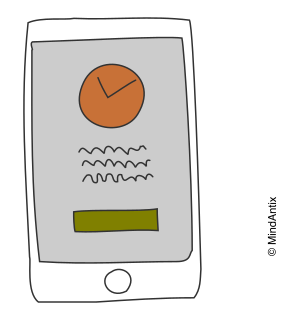How can we combine creativity and computer science to create positive education outcomes? The demand for computer science and information technology graduates is expected to grow by 14.6% over the next decade, much faster than any other area. While the number of computer science graduates is increasing, it is still not enough to meet the growing demand for STEM related jobs. Technical jobs also pay significantly more than other careers, yet many students continue to shy away from STEM fields.
So, how do we encourage more students to pursue computer science which leads to both a lucrative and a fulfilling career? Here are three strategies to address challenges that students face in technical areas.
Change Mindset
One of the barriers to learning computer science is the perception that not everyone can become good at it. Parents, educators and others can inadvertently reinforce this stereotype when they use phrases like “not a technical person”. Much like the mindset about math, which plays a key role in the poor performance among US students, limiting beliefs about computer science creates a hesitancy towards the subject. When the adults in a child’s life themselves feel traumatized with subjects like math or computer science, it’s not surprising that the child develops a fear of approaching that subject.
The reality is that there really is no “math brain” or a “computer science brain”. Most people can learn these subjects once they get over their mental block and put in the effort to learn. Neuroscience research shows that the human brain is quite malleable and it grows when you are learning a new skill. MRI scans of students doing math show that when students make a mistake a synapse fires even when students are not aware they made a mistake. As a result the brain grows when students are struggling with a concept.
The good news, however, is that mindsets can be changed. Growth mindset, a concept pioneered by Stanford psychologist, Carol Dweck, is one approach to help students shift their mindset towards a subject that they find difficult. Helping students recognize that the process of learning any skill is going to feel uncomfortable as your brain starts to grow and reconfigure itself in order to become good at the new skill.
Beyond building growth mindsets, educators need to combat the harmful stereotype that computer science is not “cool” or that it’s for “nerds”. This is where framing computer science as a way to exercise creativity is useful. Mitchel Resnick, Professor at MIT and creator of Scratch, believes we need to view computers more as finger paint instead of as some esoteric technology. He explains, “…until we start to think of computers more like finger paint and less like television, computers will not live up to their full potential.” Just like finger paints and unlike televisions, computers can be used for designing and creating things. Encouraging students to use computers in different ways to solve problems, or create new things can shape their attitudes in a more positive direction.
Build Thinking Skills Early
STEM fields face a high attrition rate (~50%) as many students switch their major part way through. When students’ first exposure to a programming language is in college, they find the coursework more challenging and are more likely to drop out of the course. One way to combat this problem is to start building computational thinking skills early on. Computational thinking is an approach to formulating problems in a way that computers could be used to solve them.
Building computational thinking skills is not hard and doesn’t necessarily need expensive resources like computers and software for all students. As an example, the Computer Science Unplugged project uses games and activities to expose children to thinking styles expected of a computer scientist, all done without using any computers. Not only do students learn concepts but the group games also build social connection and make the whole experience more enjoyable. In another example, students create an interactive play while learning programming fundamentals (like sequential logic, conditionals or flowcharts) along with creative thinking (associational and analogical thinking) and storytelling. The advantage of using an unplugged approach is that students can be introduced to useful computer science concepts at a younger age without making it overwhelming for them.
Add Project Based Learning
Projects are another way to make learning more engaging and combat the negative stereotypes students might hold at the same time. When researchers at a university in Ohio redesigned their computer science classes to encourage more creative and hands-on learning, they found that in addition to an improvement in the quality of student work, the three year retention rate increased by 34%! This is especially important for women, who typically view computer science courses “to be overly technical, with little room for individual creativity.”
By encouraging students to apply the concepts they are learning towards a project of their own choosing, educators can create an environment that students personally find meaningful. It also helps students view computer science as another tool that they can use to solve problems that they encounter.
Technology has become an integral part of our lives and most work now requires some level of technical competence. The demand for STEM, and especially CS, is only going to accelerate as we move further into the 21st century. To encourage more students to pursue computer science, parents and educators need to pay attention to limiting mindsets, provide creative opportunities to learn core thinking skills and projects to apply their knowledge in real-world scenarios.
This article first appeared on edCircuit.

